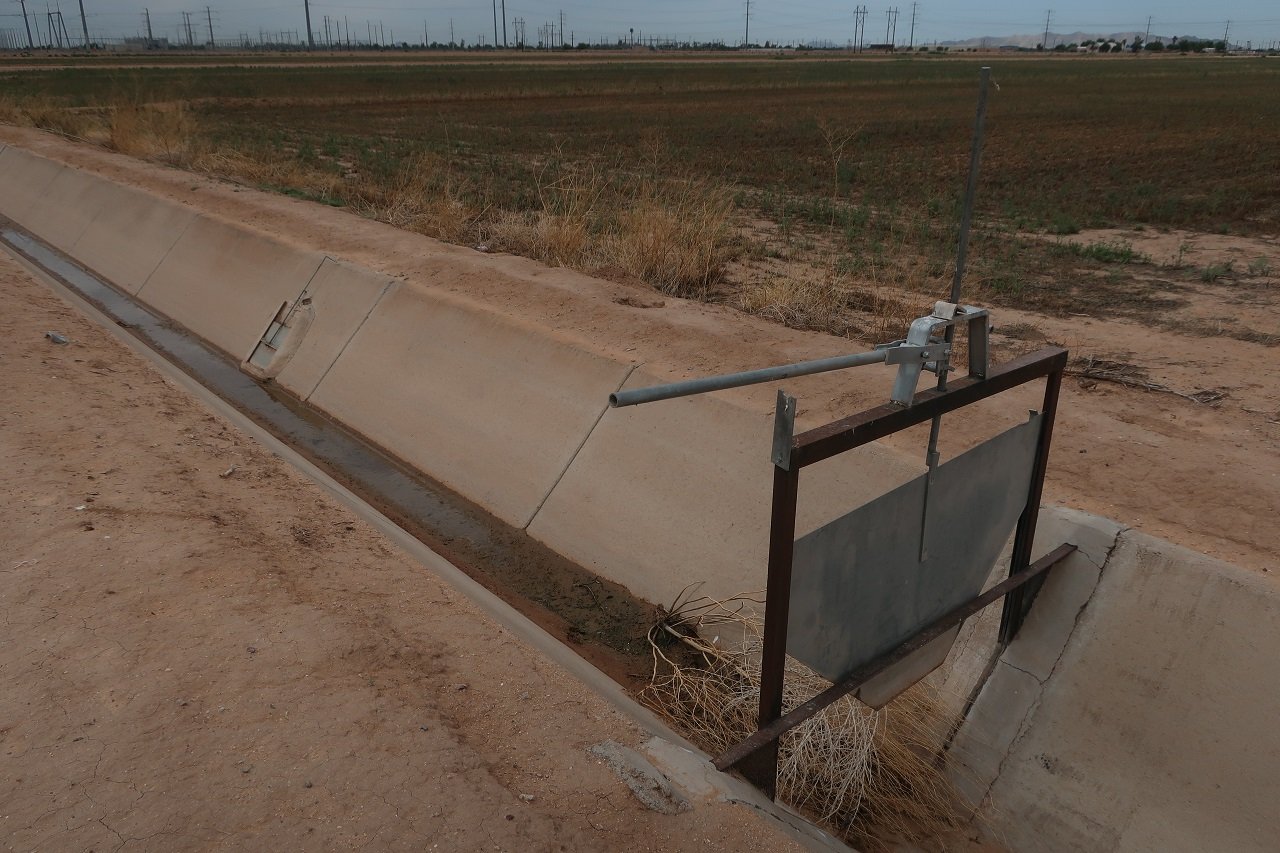COOLIDGE, Ariz. (CN) — As drought maintains its relentless grip on Arizona and water levels drop on the Colorado River storage reservoirs, Nancy Caywood is watching closely.
Caywood’s family has been growing mostly cotton and alfalfa on about 400 acres outside Casa Grande in central Arizona’s Pinal County for 90 years. This year, the San Carlos Irrigation District won’t be able to sell her any water, and with no access to Colorado River water, the family’s alfalfa is dying.
They didn’t even plant corn, she said, because they knew it would be fruitless. About 125 of their 400-plus acres is fallow, the rest failing.
“We have no cotton. It all died. We’ve got no alfalfa,” Caywood said.
This year, they’ll pay taxes and a water contract with San Carlos via her son’s corn crop, which he will grow using Colorado River water from the Central Arizona Project, she said.
The Caywoods are not alone.
The backbone of Arizona’s agriculture industry is the Central Arizona Project, which manages a 336-mile canal delivering 1.6 million acre-feet of water to Native American tribes, municipal water companies that serve homes and irrigation districts, which deliver the water to farmers.
Seven states from Utah to California share the Colorado River’s roughly 15 million acre-feet of water annually. But in the 100 years since the states agreed how to share the water, it has become clear that the river is over-allocated. By Aug. 16, for the first time the Bureau of Reclamation is expected to declare a Tier 1 shortage, which means about a third of Arizona’s 1.6 million acre-feet — 512,000 acre-feet - won’t be there.
“Most of that pain is going to be felt by Pinal County agricultural interests,” said Chelsea McGuire, the Arizona Farm Bureau government liaison, referring to a sprawling rural county between Phoenix and Tucson.
Historically, Arizona farmers pumped water from aquifers, but that forced the water table down so far the ground dropped more than 20 feet in some places.
So in 1980, Arizona passed the Groundwater Management Act, which allowed farmers to access Colorado River water in exchange for reduced groundwater pumping through 2030. Now farmers rely on that Colorado River water, McGuire said.
“When they lose access to that surface water, the CAP water, they’re going to lose about 300,000 acre-feet of water, which is essentially half of their production capacity, overnight,” McGuire said of Pinal County farmers.
It’s no small matter.
There are 760 farms in Pinal County growing cattle and calves, alfalfa to feed them, cotton, corn and a wide array of other crops. A Tier 1 shortage would spark a $66 million loss in crop sales and a broader $104 million loss in the county economy, including elimination of more than 200 jobs, McGuire said.
Surprisingly, the vast majority of Arizona’s water goes to plants.
About 74% of it goes to agriculture, for cattle and growing crops, and 20% goes to homes. Of the residential portion, about 70% is used outdoors, mostly for watering lawns and landscaping, according to the Arizona Department of Water Resources.
The state gets about 36% of its water from the Colorado River. About 40% is groundwater, 21% in-state surface water and 3% comes from recycling water from those sources, according the ADWR.
Who gets which water in Arizona is determined by a complex array of laws, contracts and intergovernmental agreements on every level.

At the top is the Colorado River Compact, a 1922 law that determined which states among Utah, Wyoming, Colorado, Arizona, Nevada, and California get what. Arizona’s share of the 15 million acre-feet is 2.8 million acre-feet, about half of which is delivered in the CAP canal and half used along the river’s main stem.










